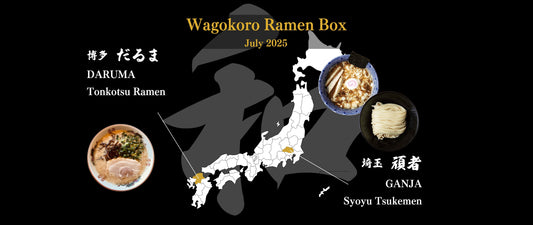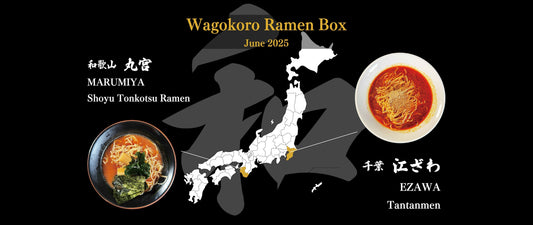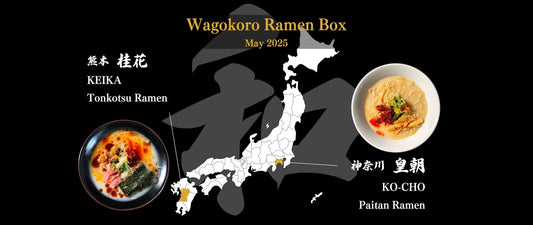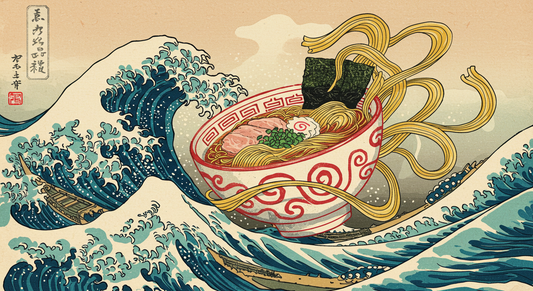The Origin and History of Japanese Ramen Food
The origin of Japanese ramen food begins with the influence of China. During the late 19th and early 20th centuries, many Chinese immigrants moved to Japan, bringing with them dishes such as "tangmian" (soup noodles) and "lamian" (pulled noodles). These dishes gradually became the foundation of what is now known as Japanese ramen food. In particular, Chinese cuisine served in places like Yokohama's Chinatown spread across Japan, gradually adapting to Japanese tastes.
After World War II, during times of food shortages, ramen became a convenient and nutritious meal for the masses. Additionally, in 1958, instant ramen was invented, allowing people to enjoy ramen easily at home, leading to its widespread popularity. The invention of instant ramen also contributed to its international expansion, making "japan food ramen" increasingly recognized worldwide as a unique Japanese creation.
Today, ramen has developed distinct regional styles across Japan. In Sapporo, miso ramen became famous, in Hakata, tonkotsu (pork bone) ramen is a specialty, and Tokyo is known for its shoyu (soy sauce) ramen. These local variations highlight the individuality of ramen in each region. Through its historical evolution, Japanese ramen has become more than just an imitation of Chinese cuisine—it has established itself as a symbol of Japan's food culture.

The Development of Japanese Ramen Food Culture
While Japanese ramen food originally had its roots in Chinese cuisine, it has undergone a significant evolution in Japan. Particularly in the latter half of the 20th century and into the 21st century, regional variations known as "gotouchi ramen" (local ramen) emerged, expanding the diversity of Japanese ramen food. For example, Sapporo's miso-based ramen, suited to the cold climate, and Hakata's rich tonkotsu ramen in Kyushu are prime examples of this regional development.
The rise of ramen specialty shops also played a key role in the growth of Japan's unique ramen culture. Since the 1990s, more and more ramen shops have focused on perfecting their broth and noodles, offering original, high-quality ramen dishes. As a result, ramen has evolved from being seen as a quick, cheap meal to being enjoyed as a gourmet experience, representing an essential part of Japanese food culture.
Moreover, the growth of Japanese ramen food culture has been fueled by media exposure through TV shows, magazines, and the internet. Reviews and rankings of ramen shops have become popular, especially among younger generations, who engage in "ramen tours" to visit famous shops across Japan. This increasing attention has led to ramen gaining recognition not just within Japan but also internationally as Japanese ramen food, further expanding the influence of Japan's distinctive ramen culture.

The Popularity of Japanese Ramen Food
There are several key reasons why Japanese ramen has become so popular. First, ramen offers a wide range of flavors, including shoyu (soy sauce), shio (salt), miso, and tonkotsu (pork bone) broths. This variety allows consumers to choose according to their preferences, appealing to a broad audience. In addition, the differences in noodle thickness and firmness, as well as the variety of toppings, give each ramen shop its unique personality, creating a strong base of repeat customers.
Furthermore, nationwide ramen festivals and events contribute to the expansion of ramen's popularity. In particular, regional specialties or "gotouchi ramen" attract tourists who want to experience the local flavor. Additionally, the creativity and craftsmanship of ramen shop owners play a significant role in enhancing the dining experience, as they offer one-of-a-kind bowls that can only be enjoyed at their respective shops, raising consumer expectations.
Ramen is also loved as a convenient and affordable "national dish," while at the same time, some specialty shops serve high-end ramen dishes. This flexibility in catering to different consumer demographics is one of the main reasons for the continued popularity of Japanese ramen food. Today, instant ramen, along with the overall "japan food ramen" phenomenon, has garnered worldwide popularity, with Japanese ramen continuing to spread globally.

The Future of Japanese Ramen Food Culture
Japanese ramen food culture is expected to continue evolving both domestically and internationally. First, the popularity of Japanese ramen food abroad continues to grow, with more ramen specialty shops opening outside Japan. In regions like Asia, America, and Europe, Japanese ramen culture has been embraced, leading to the creation of new styles of ramen that incorporate local ingredients and cultural influences. As a result, ramen is poised to become even more established as a global dish.
Moreover, there is increasing attention to health-conscious ramen options, such as low-calorie, additive-free, and vegan ramen. Recently, ramen featuring plant-based broth and noodles has been developed, challenging the traditional image of ramen as a "heavy" or "greasy" dish. This innovation caters to health-conscious consumers, creating new demand in the market.
Additionally, technological advancements like AI and digital tools may further revolutionize the ramen experience. For instance, AI-driven broth development and smartphone-based ordering systems are becoming more common, showcasing how the ramen industry is embracing technology. These innovations are likely to diversify the ramen dining experience even further, ensuring that future "japan food ramen" continues to evolve.
Looking ahead, Japan’s ramen culture will continue to adapt to new technologies and consumer needs, all while preserving its traditions, with demand expected to grow both domestically and internationally.
Experience Japan Food Ramen at Home
At Wagokoro, we offer a set box that allows you to enjoy the flavors of popular Japanese ramen shops from the comfort of your home. Unlike typical instant ramen, this set lets you experience authentic shop-quality ramen. Give it a try today!






